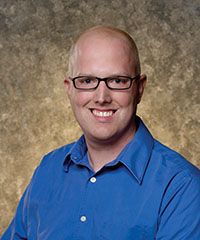A goal of the Equine Soundness Professionals is to bring farriers and veterinarians together as colleagues to work toward best footcare solutions for the horses they work with. To foster this spirit, the group hosted its first seminar on March 16, 2019, in Wellington, Fla.
Presenters included Dr. Raul Bras (CJF) of Rood and Riddle Equine Hospital; Pat Reilly, chief of farrier services at the University of Pennsylvania’s New Bolton Center; and Shane Westman, resident of farrier services at the University of California, Davis.
Bras led off the seminar with a lecture on evaluating and addressing navicular cases. From his early experiences as a young farrier and veterinarian, a mistake Bras admits he made was prescribing a specific shoe type or modification as a solution for navicular cases (as well as other therapeutic needs). His stresses to veterinarians in the room to set the farrier up for success.
“I don’t prescribe the shoe, I prescribe the principles,” he says. “I let the farrier decide how he or she will do that. When you prescribe the shoe, you take the farrier out of a comfort zone and it could go bad.”
Next, Reilly tackled the mechanics of addressing laminitis from the vantage point of the farrier. Although our overall understanding of laminitis has grown over the years, Reilly warns against those who believe they have all of the answers when it comes to addressing the laminitic horse’s footcare needs.
“There are so many causes, it is no wonder that we as farriers are struggling to find a single treatment,” he notes. “Something with this many causes, this many presentations, there is not one mechanical approach that will solve all of those problems.”
Westman surveyed the treatment of white line disease, first by discussing the terminology.
“It’s more of a syndrome, because we don’t know the specific cause,” he says. “We can’t decide if it’s fungal, bacterial or a combination. Every study you read seems to point to something different.”
Debridement and various treatments on the market still prove to be the preferred way to address white line disease, but Westman also showed preliminary work at neodymium yttrium aluminum garnet laser (Nd: YAG) laser. The laser penetrates the cell wall of bacteria and fungus and uses the moisture within that cell to destroy it.
Following lunch, Bras reviewed the existing literature on tenotomies and his approaches on these cases. Before the surgery, he says it is critical to get the client’s thorough commitment and understanding of the prognosis. What is the cost of surgery and after care? What are the client’s goals for the horse, and are they realistic? You may need to let the client know the prognosis is likely, for example, that their horse will not be able to ever return to competition, and guard their expectations. The client also needs to understand their role and time investment in care of the horse.
Pulling from his experiences at UPenn, Reilly presented on the farrier’s role in hoof surgeries. For farriers called into a clinic to provide footcare in these circumstances, Reilly reminds that infection is a major concern. Highlighting a case with a coffin bone fracture, despite the recommended preparation of removal of superficial hoof capsule, a 6-minute soap scrub and 24-hour soak in povidone-iodine solution, bacterial populations capable of inducing a wound infection remain on the hoof capsule.
Westman closed the seminar by discussing farrier-veterinarian collaboration and providing strategies and tactics that have benefited his work with veterinarians. For farriers, Westman offered a few points on how to ensure a good relationship with veterinarians.
- Leave your ego in the truck. Call in an expert if you need help with a case.
- Do not diagnose to the owner what you think is wrong with the horse.
- Learn common veterinarian terminology.
- Keep notes and photo records.
- Respect client confidentiality.
You can read more about advice from Westman on this subject, as well all the other seminar sessions, in the May/June issue of American Farriers Journal.







